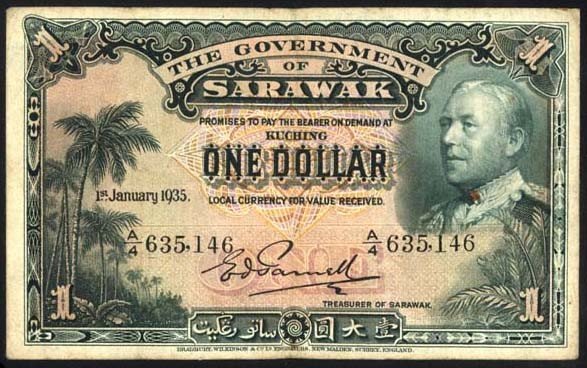Rakyat : Bina jalan raya ganti sungai
SIBU 29 Julai - Ketua masyarakat dan Tuai Rumah dalam Dewan Undangan Negeri (DUN) Ngemah, Kanowit, dekat sini, memohon agar kerajaan mengutamakan pembinaan jalan raya untuk menghubungkan kawasan berkenaan dengan pekan Kanowit. Tuai Rumah Salang Manggau, 61, berkata, jalan raya dapat mengurangkan kos pengangkutan mereka untuk berulang-alik ke pekan berbanding menggunakan bot berenjin sangkut yang menelan belanja lebih mahal.
''Kami sudah tidak larat lagi menanggung kos petrol setiap kali menggunakan bot enjin sangkut. Cuba bayangkan perjalanan ulang-alik dari Rantau Lugai, Ulu Ngemah ke pekan Kanowit menggunakan enjin sangkut 30 kuasa kuda menelan kos kira-kira RM350. Setiap penumpang juga terpaksa membayar tambang sebanyak RM60 bagi setiap perjalanan dan jumlah tersebut sangat membebankan memandangkan kami tidak mempunyai hasil pendapatan lain selain bergantung kepada hasil tani," katanya.
Permohonan beliau itu disuarakan dalam sesi dialog dengan Ahli Parlimen Kanowit, Aaron Dagang yang diadakan di Skim Penempatan Semula Nanga Tada, dekat sini, kelmarin. Turut hadir pada majlis itu ialah kira-kira 350 orang ketua masyarakat dan tuai rumah. Menurut Salang, terdapat juga keluarga yang terpaksa menyediakan empat gelen petrol untuk menghantar anak mereka ke Sekolah Kebangsaan Nanga Jagau yang merupakan sekolah paling dekat di kawasan tersebut.
Segelen minyak di Nanga Jagau, katanya, dijual pada harga RM17 dan kos bagi empat gelen minyak petrol menelan belanja sebanyak RM68. Rumah panjang Salang terletak kira-kira 12 jam perjalanan menaiki bot dari pekan Kanowit menyusuri Sungai Rajang sebelum mudik ke Sungai Ngemah. Ia merupakan salah satu daripada 170 buah rumah panjang di tiga buah sungai utama di daerah Kanowit iaitu Sungai Ngemah, Sungai Poi dan Sungai Machan yang masih belum dihubungi dengan kemudahan jalan raya dari pekan Kanowit.
Majoriti penduduk di kawasan tersebut bergantung sepenuhnya kepada pengangkutan air. Semasa sesi dialog tersebut, mereka yang hadir turut mencadangkan supaya mendirikan pejabat Kementerian Perdagangan Dalam Negeri dan Hal Ehwal Pengguna (KPDNHEP) di Kanowit. Ini bertujuan memudahkan pihak penguat kuasa agensi itu memantau harga barang di Kanowit.
Kerajaan juga turut diminta supaya membawa lebih banyak aktiviti pembangunan kerana mereka berpendapat selain memajukan daerah Kanowit, ia juga menyediakan peluang pekerjaan sekali gus meningkatkan taraf hidup penduduk di daerah itu. Dalam pada itu, Aaron ketika menjawab setiap cadangan yang dikemukakan menasihatkan masyarakat di kawasan berkenaan supaya akur dan memahami akan perubahan yang dihadapi mereka sekarang. Katanya, kenaikan harga minyak petrol dan barang dialami di seluruh negara.
''Kerajaan amat mengambil berat dengan kesusahan yang dihadapi oleh rakyat sekarang dengan mewujudkan pelbagai program dan pendekatan untuk mengurangkan beban," katanya. Menurut beliau, misalnya baru-baru ini Kementerian Pembangunan Wanita, Keluarga dan Masyarakat melancarkan projek 'Social Safety Net' yang menghendaki setiap ahli Parlimen mendaftarkan mereka yang miskin, menghadapi penyakit kronik, tua dan orang kurang upaya (OKU) di kawasan mereka untuk diberi bantuan.
Kerajaan juga, kata beliau, turut membantu mempermudahkan proses pinjaman bank daripada Agrobank dan Bank Rakyat bagi membantu mereka yang menjalankan perniagaan kecil dan bertani untuk meningkatkan lagi hasil dan produktiviti.
''Rakyat harus berpandangan jauh dengan memanfaatkan sepenuhnya segala kemudahan yang dilaksanakan kerajaan, lebih-lebih lagi dalam mengharungi cabaran dunia pada masa kini," ujarnya.
Taib & Jabu : Sarawak impi sistem pengangkutan sungai terbaik
KUALA LUMPUR: Sarawak mahu membangunkan sistem pengangkutan sungai yang terbaik di kalangan negara-negara yang lebih maju berbanding Malaysia. Ketua Menteri Pehin Sri Abdul Taib Mahmud berkata, matlamat itu sudah dirintis dengan kajian Sistem Pengangkutan Sungai Sarawak (SWIT) yang bermula pada Mac 2007.
“Kita bangga dengan sistem pengurusan sungai yang sedia ada dan telah diiktiraf lebih maju berbanding negeri-negeri lain dalam Malaysia. Bagaimanapun, saya harap kita tidak berpuas hati setakat ini sahaja,” katanya dalam teks ucapan yang dibacakan oleh Timbalan Ketua Menteri Datuk Patinggi Tan Sri Alfred Jabu Numpang di sini, semalam. Jabu mewakili Taib melancarkan buku ‘Refleksi dari sungai-sungai Sarawak’ yang merupakan sebahagian daripada hasil kajian terhadap sistem pengangkutan sungai di Sarawak.
Menurut Taib, hasil kajian SWIT akan digunakan untuk merangka pelan induk yang bertujuan menambahbaik sistem pengangkutan sungai. Pelan berkenaan bakal menekankan aspek keselamatan, kecekapan, kebersihan dan juga merangkumi aspek sosio-ekonomi iaitu menaiktaraf pendapatan penduduk miskin. Malah, ia bertujuan untuk memudahkan penduduk luar bandar yang tidak mempunyai akses jalan raya ke pekan atau bandar dengan kemudahan kesihatan dan pendidikan.
Sarawak memiliki 55 batang sungai yang panjang keseluruhannya 5,000 kilometer. Kajian berkenaan merupakan usaha sama antara Program Pembangunan Pertubuhan Bangsa-bangsa Bersatu (UNDP) dan Lembaga Sungai-sungai Sarawak (LSS). Mengenai buku yang kaya dengan gambar-gambar berkaitan sungai dan kegunaannya, Taib berkata, ia signifikan dengan kehidupan penduduk Sarawak sejak zaman-berzaman.
“Sejak beberapa generasi, sungai-sungai di Sarawak sudah sebati dengan komuniti dan merupakan sebahagian warisan semulajadi negeri. Perbincangan mengenai Sarawak tidak lengkap jika tidak membincangkan peranan sungai yang berkait rapat dengan masyarakat,” katanya. Buku yang diterbikan dengan kerjasama The Borneo Post itu juga diharapkan dapat meningkatkan kesedaran di kalangan masyarakat umum. Turut hadir, Timbalan Menteri Pelancongan Dato Sri Sulaiman Taib.










